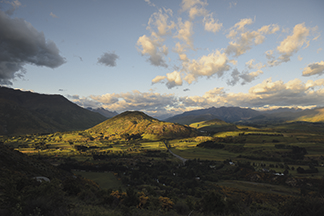The relationship between Māori, whenua and the law has been a long and complex one. A century and a half ago the creation of the Native Land Court started a period of the greatest upheaval and change Māori ever experienced in their status and relationship with the whenua.
Published: Wednesday, 27 January 2016 | Rāapa, 27 Kohitātea, 2016

Since then almost 200 different laws, and amendments to laws, have addressed different aspects of Māori land law. At the same time the amount of land in Māori ownership continues to dwindle.
In 1993 Te Ture Whenua Māori Act was enacted with one of its key objectives to see remaining Māori land retained. However, that Act still inherited a patchwork of rules, many of which are now outdated and don’t serve owners well.
After the 1993 Act and the current state of Māori land was reviewed (see timeline below) it was decided that a single, comprehensive replacement Act would be the best way to enshrine Māori land as a taonga tuku iho and give Māori land owners greater ability to make decisions and therefore have greater control of their whenua.
In 2013 Cabinet approved a recommendation that a new bill be written and in 2014 a comprehensive consultation programme got underway.
Sir Eddie Durie has over 40 years involvement with Māori land issues, including as a Māori Land Court judge and Chair of the Waitangi Tribunal. He believes the current reforms are “going in the right direction.”
“I started at the Māori Land Court in 1974 and over the years I had to make decisions which I felt the people themselves should be making.”
One of the key objectives of the current reforms is to establish a new Māori Land Service to help land owners with decisions they make about their land
It will provide a number of services, including access to information on land ownership and governance, bringing together services currently provided by a number of different agencies including Land Information New Zealand (LINZ), Te Puni Kōkiri and the Māori Land Court.
The Māori Land Service will be designed to help land owners choose the right governance structure for their needs, register their decisions about governance and maintain records of Māori land ownership and titles – without land owners having to go to the Māori Land Court for a decision.
Lawyer Mataanuku[PT1] Mahuika also supports Māori land owners being able to make more of their own decisions. He chaired the Te Ture Whenua Māori Act Review Panel in 2012 and sits on the Ministerial Advisory Group overseeing the new Bill. But, he says it has been his own personal experiences which drive his desire to see some change.
“The more our people see land owners being able to make their own choices supported by a Māori Land Service, the more Māori land owners will get involved.That is a good thing.”
However, despite Mataanuku Mahuika’s support for Māori land owners having more control of their affairs he says the need for a strong Māori Land Court will remain.
“We need the Māori Land Court to remain as a strong judicial body to deal with problems that arise or when people do things that are wrong. The Court has a key role to play.”
Harvey Bell has represented FOMA in consultation on Te Ture Whenua Māori reform. He is also a trustee and secretary of Morikaunui Station near Whanganui. He can see benefits coming from a new Act.
“If people can see light at the end of the process tunnel, then the reform will be positive.”
Liz Mellish, Chair of the Palmerston North Māori Reserve Trust, says streamlining the processes and access to services for Māori landowners is a positive thing.
“They can be complicated especially for individuals and whānau. The reality is no Pākehā organisations have to operate under the constraints and complex rules that we do.”
Harvey Bell says a positive part of the process so far is the fact that consultation and engagement has been genuine. Liz Mellish agrees describing it as robust.
“There were parts of the first draft of the Bill that many of us didn’t like. And, we said so. We were heartened that as a result, some significant changes were made and signed-off by Cabinet.”
The key changes made as a result of feedback from Māori land owners and approved by Cabinet in November 2015 were:
- the managing kaiwhakarite proposal was removed;
- the purpose and principles sections were revised to more clearly reflect features of the preamble of Te Ture Whenua Māori Act 1993;
- whānau will have the option for individuals to obtain succession to land instead of having to form a whānau trust on intestate succession;
- the Māori Land Court will be given greater discretion when considering applications to remove the status of Māori freehold land; and
- existing Māori trusts and incorporations will now continue as they are with the option to transition to rangatōpū, but only if they choose to.
It is planned that the Bill will be introduced to Parliament early in 2016 and then referred to Select Committee for consideration. The select committee will seek submissions from the public, which will give land owners another opportunity to have their say.
In the meantime, work is continuing on the form and function of the Māori Land Service in 2016.